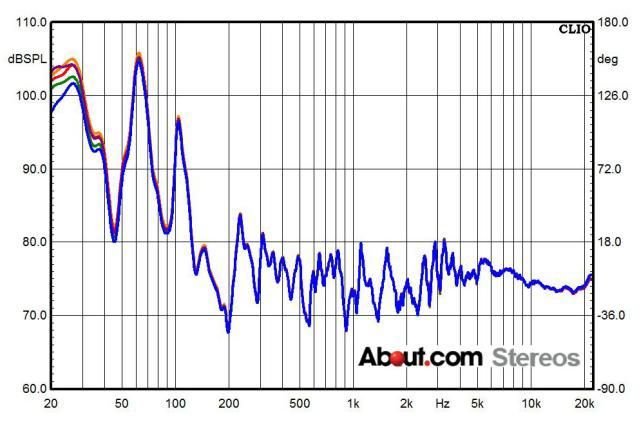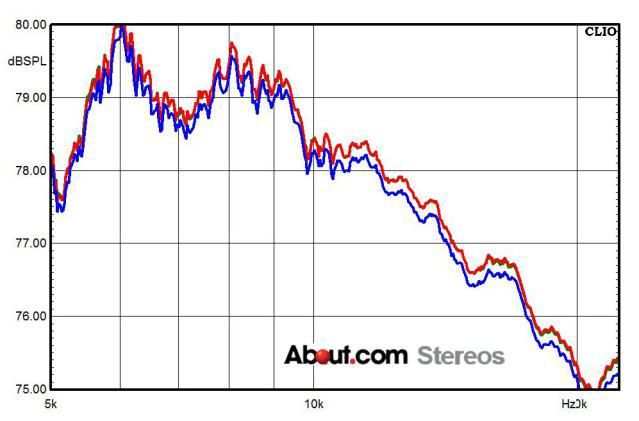Expensive and cheap speaker cables: what's the difference? Part 2

Note translator: the text uses the classification of cables in accordance with the American system of marking the thickness of the wires. Specify cable specifications in accordance with the international standard for wire gauges IEC 60228 (AWG) here .
We use measurements to clarify the situation with cables

')
[ Part 1 ]
When I wrote my original article , exploring the possibility of measuring the effect of speaker cables on the sound of the speaker, I showed that replacing the cable can cause audible changes in the sound of the system.
For research, I used, for the most part, the exact opposite of cables, for example, cables of 24 and 12 calibers. Many readers wondered what kind of difference I measured, if I compared a conventional 12 gauge cable and a high-quality audio cable. And I was also surprised. Therefore, I chose all the best cables that I had, borrowed a few from my friends and repeated the test.
This is how the testing method looked like: I used my Clio 10 FW sound analyzer and the MIC-01 measuring microphone to evaluate the performance of my Revel Performa3 F206 speakers indoors. It was necessary to conduct a study indoors to make sure that the ambient noise would not affect the experiment. Yes, the indoor effects will overlap the acoustic effects of the room, but it doesn’t matter, since I was only looking for differences in measured results when I changed the cables.
And to remember the theory behind it all: the speakers of the loudspeakers and the components of the signal spectrum splitter work like a sophisticated electrical filter that is configured to provide speakers with the desired sound. Adding additional resistance, in the form of a speaker cable with a large resistance, will change the frequencies at which the filter operates, which in turn will change the frequency response of the speakers. If the cable additionally introduces a significant amount of inductance and capacitance into the filter, this will also affect the sound.
Test 1: AudioQuest, QED and 12 gauge cable

In my tests, I measured the effects of several professional cables ranging in length from 10 to 12 feet, and compared the performance with a regular 12 gauge cable. Since the results were, for the most part, similar, I will present them three at a time, with two professional and one usual on the chart.
The graph shows: normal cable (blue curve), AudioQuest Type 4 cable (red curve) and QED Silver Anniversary (green curve). As you can see, in most cases the differences are incredibly small. In fact, most of the differences are within the normal, minimal deviations from measurement to measurement, when working with sound sensors, due to a certain amount of noise traces, thermal fluctuations in the speakers, etc.
There is a slight difference at a frequency below 35 Hz. At these frequencies, professional cables produce less bass at the speaker output, although the difference is about –0.2 dB. It is very likely that this difference cannot be heard, due to the relative insensitivity of the human ear in this range. In fact, most music has no content in this range (for comparison, the frequency of the lowest notes of a standard bass guitar and double bass is 41 Hz). It is also difficult to hear because only large tower-type speakers have sufficient output at frequencies below 30 Hz (you can connect a subwoofer to reproduce these frequencies, but almost all of them are self-powered and the speaker cable will not have any on the subwoofer influence). You will hear much greater differences in the low-frequency response if you move 1 foot in either direction.
I did not have the ability to measure the electrical properties of the AudioQuest speaker cable (the guy I borrowed it urgently demanded), but I measured the resistance and capacitance of the QED and the normal cable (the inductance of the cables was too small for my Clio 10 FW, could measure it).
Normal 12 gauge cable: resistance - 0.0057 Ohms per foot, capacitance - 0.023 nF per foot.
QED Silver Anniversary: resistance - 0.0085 Ohm per foot, capacitance - 0.014 nF per foot.
Test 2: Shunyata, a high-end prototype, and a 12 gauge cable

The next stage involved a more professional cable, 1.25 inches thick, Shunyata Research Etron Anaconda, and a 0.88-inch prototype, which is being developed for a professional audio company. Both are rather thick due to the use of a fabric outer sheath, but they are still heavy and expensive. The Shunyata Reserach cable costs about $ 5,000 per pair.
The graph shows the characteristics of a conventional cable (blue curve), a Shunyata Research cable (red curve), and a nameless High-End prototype (green curve). Here are their parameters:
Shunyata Research Etron Anaconda: resistance - 0.0020 Ohm per foot, capacity - 0.020 nF per foot.
High-End prototype: resistance - 0.0031 Ohm per foot, capacitance - 0.038 nF per foot.
Here we began to notice some differences, especially above 2kHz. Let's take a closer look and take a closer look ...
Test 2: Enlarged View

By expanding the magnitude scale (dB) and limiting the range of frequencies, we can observe that large, thick cables produce measurable differences in the characteristics of the speaker. The F206 is an eight-speaker, but the magnitude of the differences will increase when using a four-speaker.
This is not a big difference, as a rule. The level increase was +0.20 dB with Shunyata and +0.19 dB with the prototype, but it covers a range of more than three octaves. With a four-speaker speaker, these values should double to 0.40 dB and 0.38 dB, respectively.
Based on the research mentioned in my original article, low-Q resonant oscillations (high frequency range), of 0.3 dB, can be heard. Therefore, replacing an ordinary cable or a thin professional cable with one of the larger cables, you can most likely hear the differences.
What do these differences mean? I dont know. You may or may not notice them, and the last will probably happen. I will not guess whether the sound of this speaker improves or worsens because it makes the upper frequencies more saturated, which is good for some speakers and bad for some. Please note that conducting the experience in sound-absorbing rooms would allow for measuring greater differences.
In one of the issues of our podcast, we just discussed the issues of measuring sound quality with Yuri Fomin, a high-class acoustic engineer and founder of F-Lab.
Source: https://habr.com/ru/post/377369/
All Articles